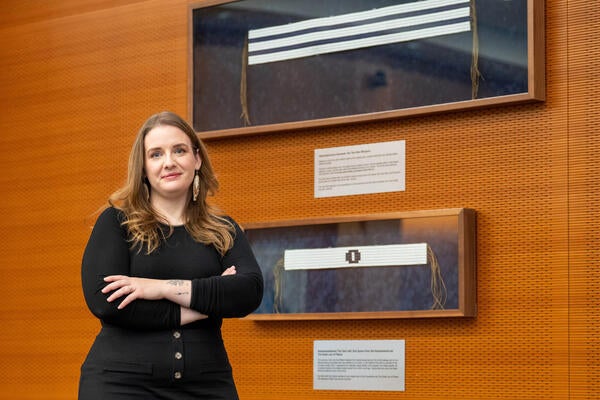
Q and A with the experts: the psychology of physical distancing for kids
As discussions continue about what the school year will look like in Canada come September, many parents are wondering what physical distancing rules mean to their kids.

As discussions continue about what the school year will look like in Canada come September, many parents are wondering what physical distancing rules mean to their kids.
By Media RelationsAs discussions continue about what the school year will look like in Canada come September, many parents are wondering what physical distancing rules mean to their kids? Do these rules confuse them? Do they do psychological harm in the classroom or at daycare?
We asked Professor Heather Henderson, an expert in developmental psychology, to weigh in.
What does physical distancing mean to kids? How old do they have be to understand it?
By the early preschool years (3 or 4 years), children can understand the need for physical distancing at a very basic level. Parents and teachers can use simple explanations like ‘to make sure germs don’t get passed around.’ By early elementary school (age 5 or 6), children will likely have more questions and we want to be sure we are explaining in a way that doesn’t cause more anxiety than they already have. Children need to know they are safe and adults should do their best to explain that everyone in their family/school are working hard to maintain social distancing so we can keep each other safe.
How will small children in particular at daycare or in the lower elementary school grades deal with physical distancing?
Small children may need lots of reminders, but they can definitely do this! For younger children, it is important to have physical reminders around all the time (e.g., circles on the floor showing each child’s spot) and to come up with routines that build in social distancing (e.g., standing in line with one arm in front and one arm behind to keep 2 metres between everyone).
Young children naturally spend a lot of time in parallel play which means they like to do a solitary activity (e.g., colouring) in close proximity to other children doing the same activity. We can use this natural preference to our advantage at school and at home by coming up with activities in which children work on the same project, distanced apart, and using their own materials. Children can still talk about their projects and ideas while maintaining safe physical distancing. Young children also enjoy contributing “parts to a whole” so each child can contribute one part of a bigger project that parents and teachers can put all together to display.
Is this something parents/teachers need to worry about in terms of their mental health?
I think isolation is difficult for children (and adults), but I do not think that our temporary need to spend time with others while maintaining safe social distancing is going to create a general risk to mental health. I think it’s really important to have honest conversations with our children about how hard this feels, but to explain that we are doing this now to make sure we all stay safe. Children should be given a chance to talk about what they find difficult about distancing. Parents and teachers can help children come up with other ways to create “closeness” like writing letters to friends and classmates about the things they will look forward to doing together when it is safe again.
The University of Waterloo has a number of experts available for comment on various aspects of the COVID-19 pandemic, click here to see the up-to-date list.

Read more
New research from the University of Waterloo centres Haudenosaunee-led efforts in the repatriation and reclamation of cultural and intellectual property

Read more
Researchers awarded funding to investigate ecology, climate change, repatriation, health and well-being through cultural and historical lens

Read more
New Canada Research Chairs will tackle future-focused problems from social robots and intergroup attitudes to geochemistry and nanoscale devices
The University of Waterloo acknowledges that much of our work takes place on the traditional territory of the Neutral, Anishinaabeg, and Haudenosaunee peoples. Our main campus is situated on the Haldimand Tract, the land granted to the Six Nations that includes six miles on each side of the Grand River. Our active work toward reconciliation takes place across our campuses through research, learning, teaching, and community building, and is co-ordinated within the Office of Indigenous Relations.